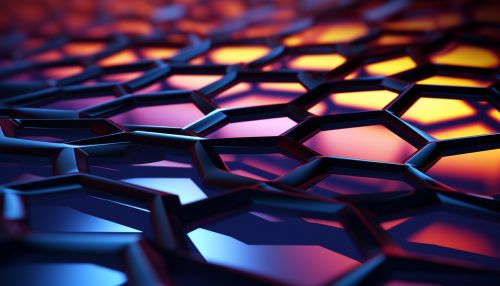Graphene
Introduction
Graphene is a single layer of carbon atoms arranged in a two-dimensional honeycomb lattice. It is the basic structural element of many other allotropes of carbon, such as graphite, diamond, charcoal, carbon nanotubes, and fullerenes. Graphene is the thinnest compound known to man at one atom thick, and also incredibly strong - about 200 times stronger than steel. On top of that, graphene is an excellent conductor of heat and electricity and has interesting light absorption abilities. It is truly a material that could change the world, with unlimited potential for integration in almost any industry.


Structure and Properties
Graphene's structure is a single planar sheet of sp2-bonded carbon atoms that are densely packed in a honeycomb crystal lattice. The carbon-carbon bond length in graphene is about 0.142 nanometers. Graphene sheets stack to form graphite with an interplanar spacing of 0.335 nm. Graphene is the first example of two-dimensional materials and is also termed a monolayer of graphite.
Graphene's unique structure gives it some unique properties. It is extremely strong - about 200 times stronger than steel - yet incredibly light. It is also an excellent conductor of heat and electricity. These properties make it a very useful material in fields such as electronics, sensors, and high-strength materials.
Synthesis
There are many ways to make graphene, including chemical vapor deposition (CVD), liquid phase exfoliation of graphite, and mechanical exfoliation of graphite. The method chosen depends on the desired properties of the graphene and the intended use.
Applications
Due to its unique properties, graphene has potential for use in a wide variety of applications. These include electronics, biological engineering, filtration, lightweight/strong composite materials, photovoltaics and energy storage.
Future Prospects
The future of graphene looks promising, with many potential applications being researched. However, there are still challenges to be overcome, such as finding a cost-effective method of producing high-quality graphene on a large scale, and overcoming the issues of reproducibility and scalability.
